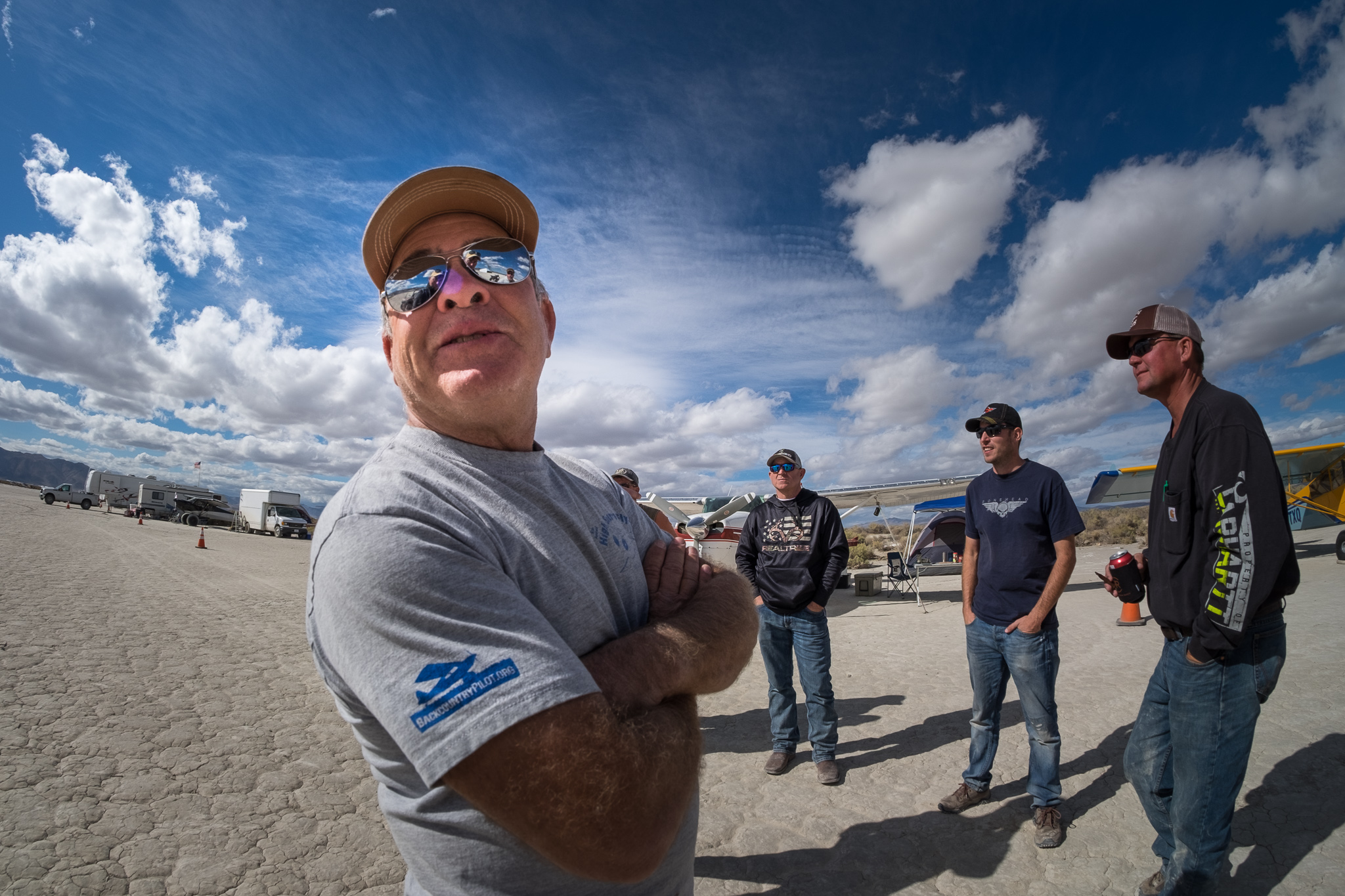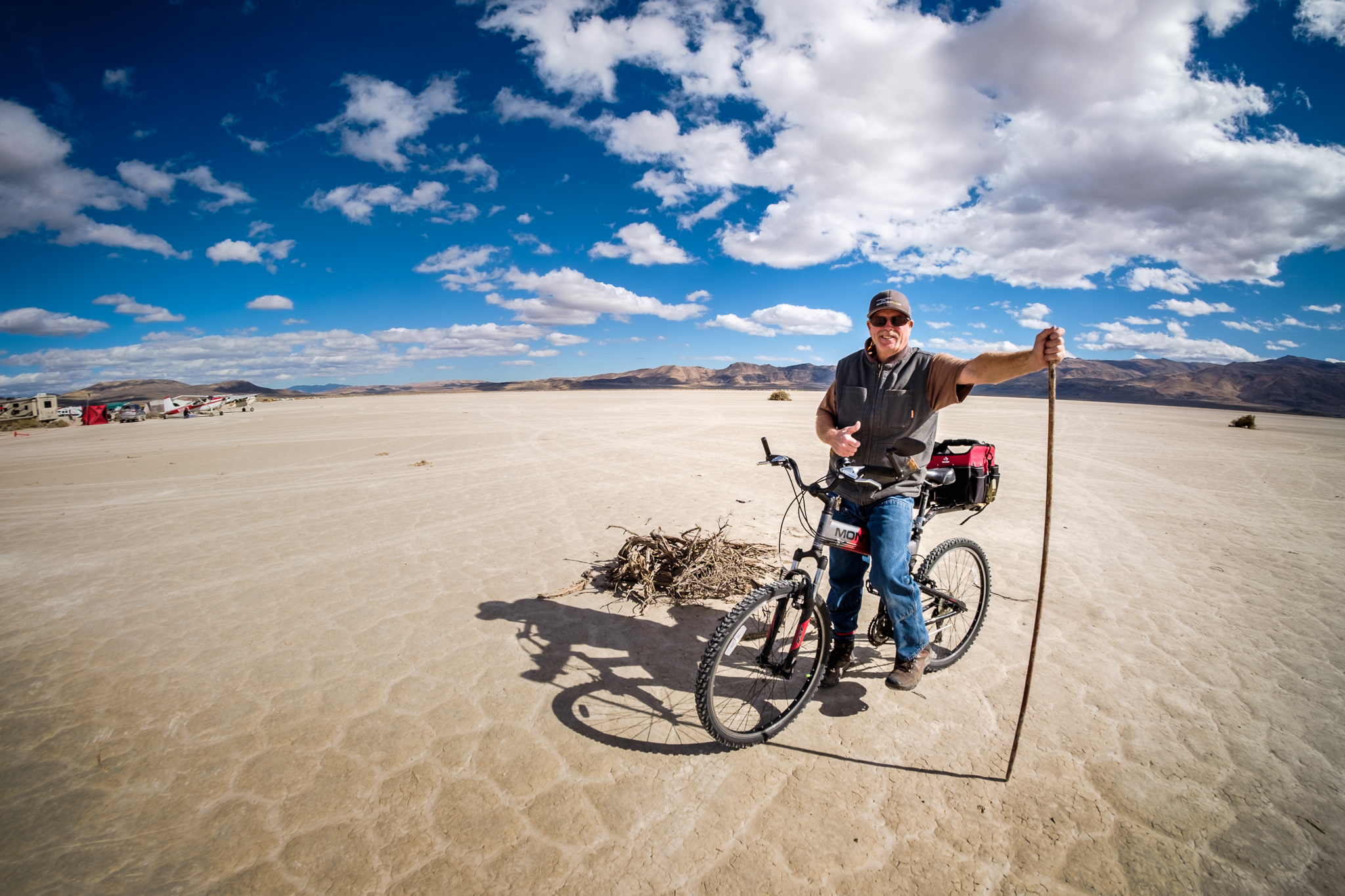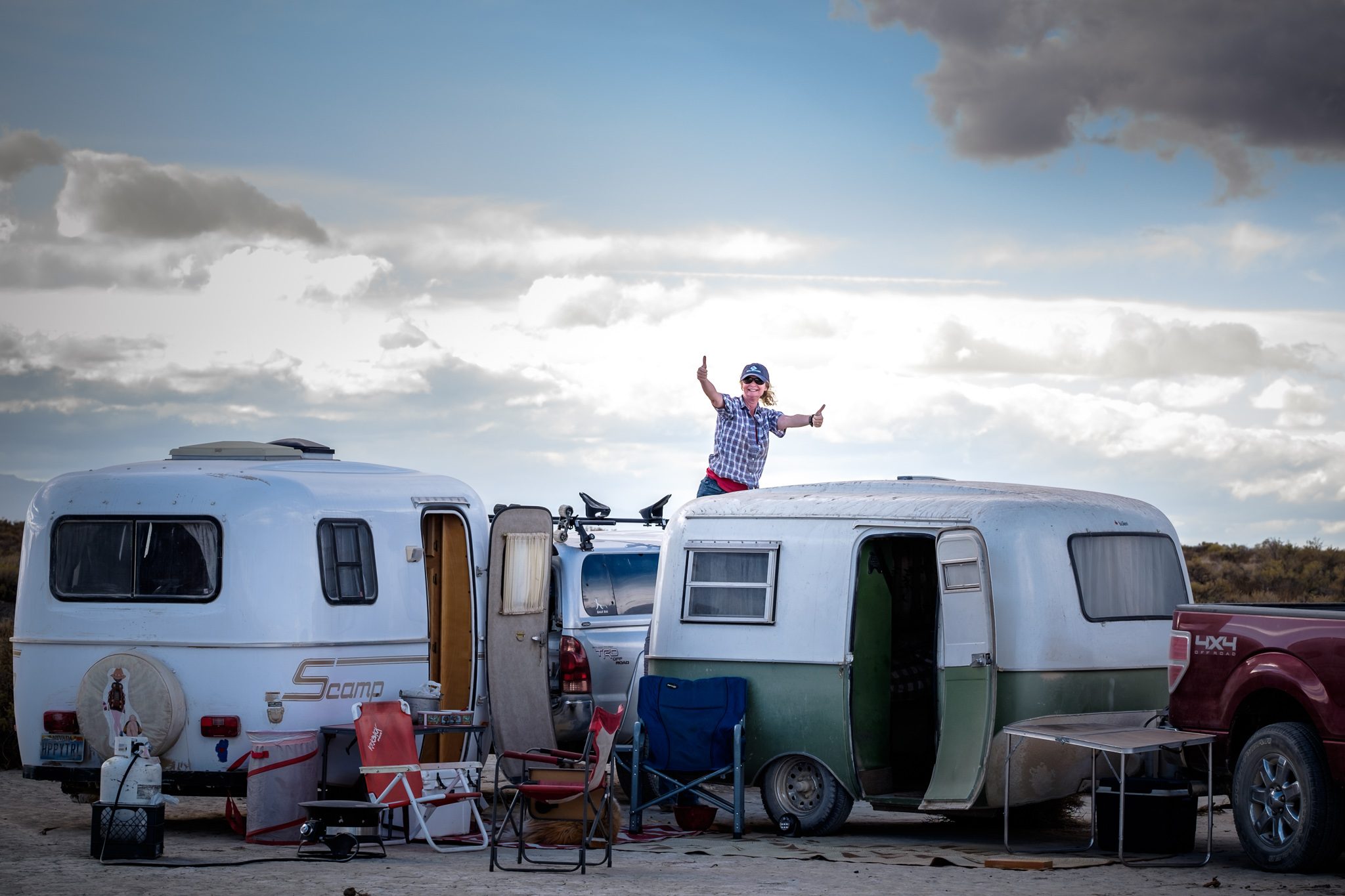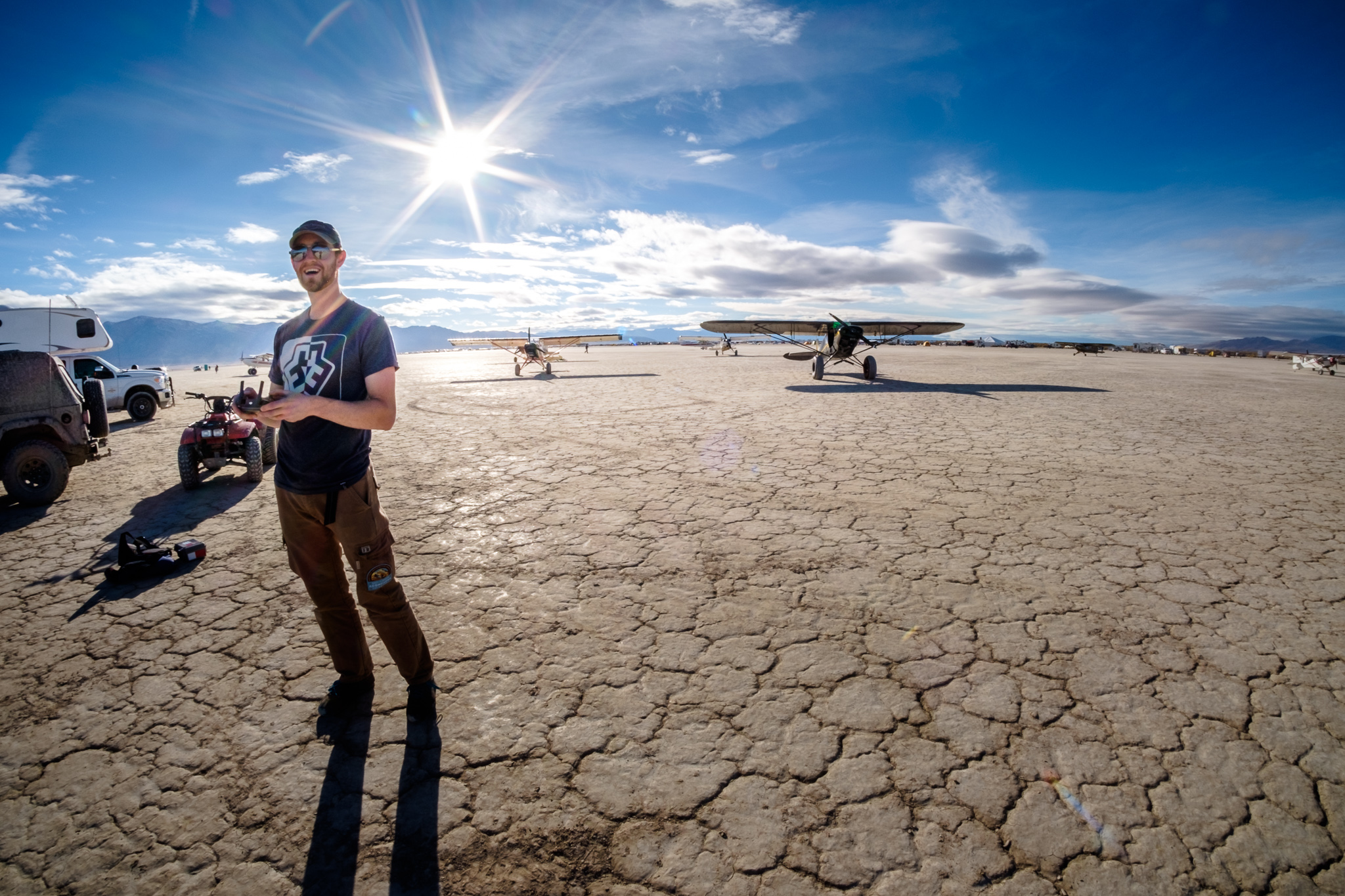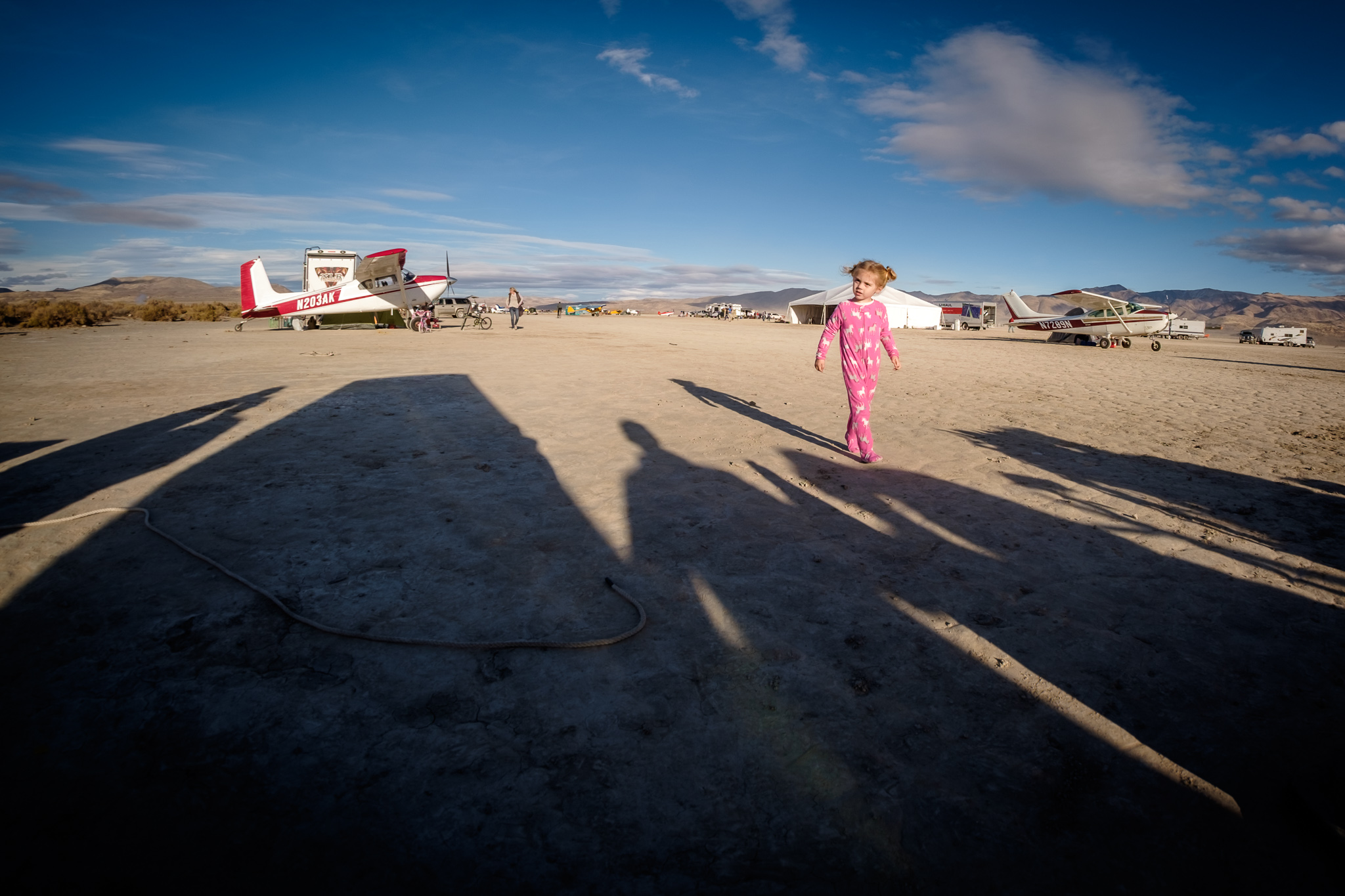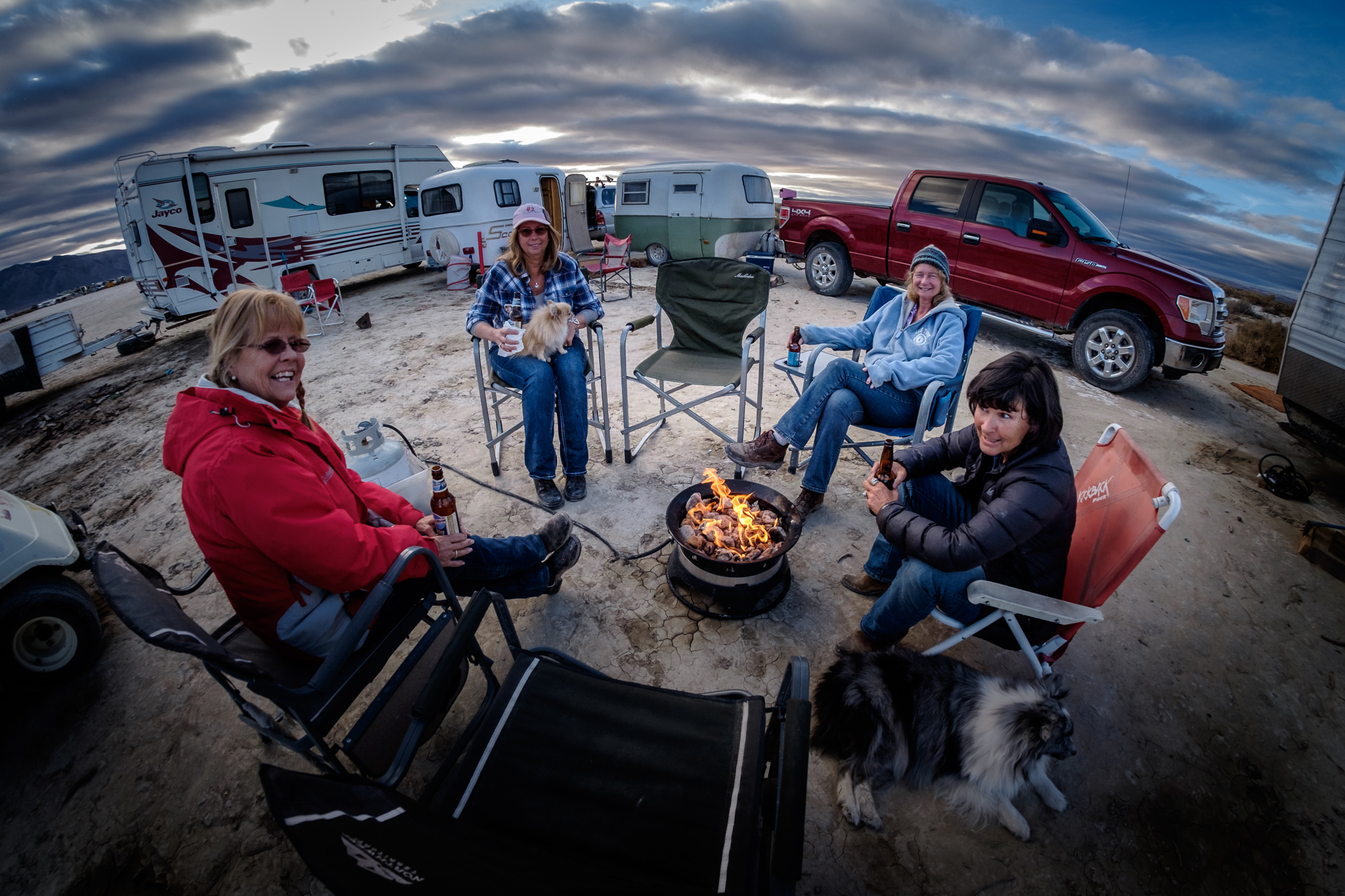In late October I flew the Husky down to the wild High Sierra Fly-in. Hosted by Kevin Quinn, the annual gathering has become a must-do aviation event in the west. The event takes place on the dry playa called Dead Cow and is primarily aimed at backcountry pilots and airplanes. However, the playa is so smooth, many different types––from Mooneys and Bonanzas, to Amphibians––drop in for the fun and camaraderie. In all, about 200 planes made their way to the desert.
Kevin put together a spectacle in an otherwise inhospitable environment arranging for outhouses, firewood, water, a marquee for shade, live music, fireworks, 2 meals and even ice cold beer! For a few days he transformed a dry, dusty desert into a fanciful aviation netherworld.
High Sierra Fly-in Founder Kevin Quinn. "...Backcountry flying is what's going on in aviation today."
Above and beyond a backdrop of general aviation, racing was a highlight of the weekend. Kevin designed a unique competition that tests pilots and planes. Essentially it's a drag race––two planes racing each other side-by-side for about 1/2 mile. At the far end, racers land, turn around, takeoff and sprint back to the start. While airborne, winners must cross the start line, and be the first to come to a complete stop, on heading. For speed, the racers rarely get above 10 feet making thrilling viewing for spectators. The event runs a good part of one afternoon; slowly eliminating participants until an ultimate victor emerges. It is fun and fiercely competitive. I did not participate.
I say I "survived" the High Sierra because one night we were hit by a nasty storm. In preparation I anchored my little 3-season Marmot as best I could in the cracked dry ground. At bedtime the wind started. Then it built and shook my tent with a violent roar. I lay awake with a strategy of hoping the night would pass quickly. Incredibly, wind speeds continued to climb with a correlating higher volume level. No sleep was to be had and there was nothing I could do but accept the unfortunate noisy reality.
Taildraggers and tents on the playa
Knowing the wind sounded worse than it was, I was reluctant to use my flashlight and assumed everything was ok. However, after some particularly hard gusts I couldn't keep from inspecting my tiny abode. Since it was in hand, I'd use it to check the Husky hadn't broken free from its tie downs. I was hesitant to actually get out of my tent because, without my body weight, I was certain my tent and and all my belongings would flap off into the darkness. After inspecting things repeatedly, I realized I might as well sit upright and monitor with round-the-clock vigilance and simply, tenaciously, wait-out the weather.
Over time I noticed the wind was not abating as I'd earlier convinced myself it would. It was actually strengthening––again. And, my tent was slowly deforming. The sophisticated, semi-dome I'd so carefully chosen at REI was becoming concave; pressing down on me with malicious betrayal. Determined, I sat upright, fought it back into its original shape scolded it with colorful expletives. Stay, damn you stay! With two out-stretched arms and one foot anchoring a corner, I succeeded––until my arms became exhausted. Defeated, I collapsed back onto my sleeping bag, then mustered the will to sit up and hold back the storm all over again––and again, and again, and again. After repetitive hours of almost useless effort, I told myself the shape didn't really matter that much.
It began with ominous big, juicy, widely spaced drops. For a while I convinced myself it wasn't rain but actually playa tiles being ripped from the desert floor and blowing into me. With renewed vigor, I got myself up and back into action assessing. Determined to get the tent back into its proper dome shape, I pushed back against the wind. This time I could feel the tent was soaked. I jammed my foot-anchor into its designated position only to have it splash into a cold puddle. Yep, it was rain all right; and it was becoming a deluge. The shape of my tent and its hideously delicate rain fly was now vitally important. Unfortunately, both were designed for rain falling vertically down. I was experiencing horizontal rain.
Aircraft of all kinds are welcome at the HSF
In time, holding the saturated tent left my hands wrinkled wet. As the night wore on, water dribbled down my arms soaking into my clothes and sleeping bag. Feeling around the perimeter to check for leakage, I realized there was an inch of water everywhere. My tent––designed to keep water out–– was doing a bang-up job at keeping it in. Unzipping a door did little to abate the buildup. It only compromised the flimsy shape further. Since I was now in water, I decided the only thing to do was get to higher ground. I constructed an island from my damp bag of clothes and extra jackets and sat shivering on top the little mound. There I perched and steadfastly held onto the tent. When my arms tired, I mindlessly fished out more of my belongings from the surrounding brown water. With little else to do but wait, I congratulated myself for purchasing a sleeping bag with warmth-preserving man-made fill. But I was still bitterly cold.
The wind finally abated about 6:00am. I could finally let go of my tent and it would hold its own shape. The sky started to lighten. Exhausted, I centered myself on my island and curled into a fetal position. I comforted myself with a modicum of remaining damp warmth provided by my sleeping bag. As long as I didn’t extent any of my limbs, I could keep myself out of the water.
Eventually I got myself up and into some semi-dry clothes. The storm had completely vanished leaving behind only brisk cold air. The playa was now a mire. I circuitously made my way to the morning bonfire avoiding the worst of the mud. As I trudged, weird, prehistoric looking shrimp squirmed to the surface.
A brisk morning after the windstorm.
Sadly, during the night, a Piper Cub parked just two planes from my Husky, pulled free from its tie-downs and blew about half a mile down wind. There, at the far edge of the lake, it collided with two other planes, flipped, and wrapped itself into a sorrowful yellow ball. There were other casualties too but none as dramatic. On my muddy morning walk I saw several bent and broken tents. They appeared to have been abandoned in the night, and left to fend for themselves. Scattered where they died they laid as wet and muddy reminders of the stormy night. I felt better knowing luckily, I had survived relatively unscathed.
Camaraderie of the High Sierra
As the morning wore on, the sun began to warm and the dry air pulled the wetness away. The happy sound of airplanes began again and the High Sierra Fly-In was back in action as though nothing had happened.
I set out to capture the spirit of the event as best I could with my camera. Over the several days I spent in the desert, I got a wide variety of images––from aerials, to portraits to landscapes. I uploaded the best to my Flickr page and BackcountryPilot.org. A few days later, I was contacted by Plane and Pilot Magazine. It turned out, they were doing a story on the event and wanted some photos to accompany their article. I forwarded on the images they were interested publishing knowing, if I was lucky, they may use one or two. About a month later I received an advance copy of the February issue. Incredibly, they used 8 of my photographs! I was so pleased I could be a part of the effort to revitalize general aviation.
I hope to see you at the next High Sierra Fly-in! It is unlikely there will be a storm but, come prepared.
Alex
Evening departure...until next year!


